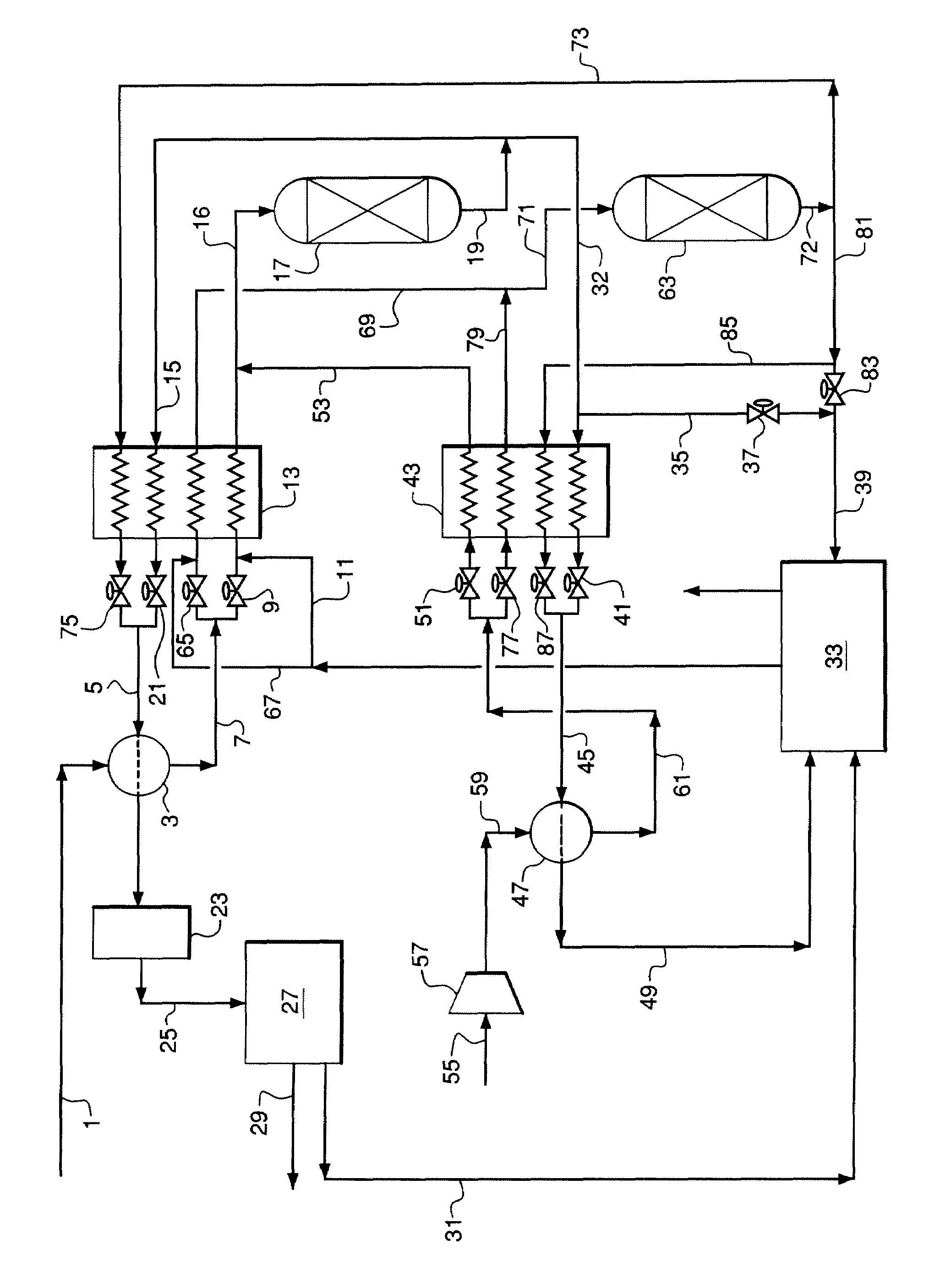Hydrogen Production Using Complex Metal Oxide Pellets
a technology of complex metal oxide and metal oxide pellets, which is applied in the direction of physical/chemical process catalysts, instruments, navigation instruments, etc., can solve the problems of process increases the capital and operating costs of hydrogen production, and inability to meet the requirements of hydrogen production
- Summary
- Abstract
- Description
- Claims
- Application Information
AI Technical Summary
Benefits of technology
Problems solved by technology
Method used
Image
Examples
example 1
[0122]A batch of pellets was prepared by mixing complex metal oxide powder with 2 mass % organic binder based on the mass of the complex metal oxide powder and dry pressing the powder into ⅛ inch diameter pellets. Some of the pellets were calcined at 1000° C. and others at 1100° C. The performance of these pellets was tested for 15 cycles in the TGA using a dry atmosphere as described above for the CO2 sorption / desorption cycle test. The sorption of CO2 was carried out at 700° C. and the desorption at 750° C.
[0123]Pellets calcined at 1000° C. and 1100° C. showed good initial CO2 sorption capacity of 23-24 mass %, but the capacity started to decrease after about 10 cycles. The CO2 sorption capacity continued to decrease with every additional cycle, and was considerably lower than the initial capacity after 15 cycles. Examination of the pellets after the cycle test revealed that the pellets grew considerably in size and had essentially zero crush strength.
[0124]This example illustrate...
example 2
[0125]A batch of pellets was prepared by mixing complex metal oxide powder with 20 mass % of the inorganic binder bentonite, 2 mass % methocel pore former and water. Another batch of pellets was prepared by mixing complex metal oxide powder with 20 mass % of the inorganic binder calcium aluminate, 2 mass % methocel pore former and water. Mass percentages are based on the mass of the complex metal oxide powder. The mixtures were extruded through a one-inch screw extruder to form pellets. The pellets were dried at 120° C. and then calcined at 1000° C. for 2 hours.
[0126]The bentonite-containing pellets and calcium aluminate-containing pellets were each tested by exposing them to 50 cycles of the CO2 sorption / desorption cycle test in the TGA using a dry atmosphere described above for the CO2 sorption / desorption cycle test. Sorption of CO2 was carried out at 700° C. and desorption at 750° C. Both groups of pellets showed an initial CO2 sorption capacity of about 22 mass %. The CO2 sorpti...
example 3
[0128]A number of different pellets were prepared to test the effect of mixing either complex metal carbonate or complex metal oxide with inorganic alumina binder in the form of gamma alumina and water. The gamma alumina was prepared by dispersing boehmite powder in a 0.05 N nitric acid solution. A mixture was formed by mixing either complex metal carbonate or complex metal oxide with 30 to 50 mass % inorganic alumina binder in the form of gamma alumina based on the mass of carbonate or oxide powder, and with 0 to 2 mass % pore former in the form of urea, NaCl, or mineral oil. The mixture as used to prepare 1 / 16 inch diameter pellets by extruding in a lab-scale extruder.
[0129]The pellets that were prepared without pore former were dried at 120° C. and then heated from room temperature to 900° C. at a heating rate of 5° C. / minute in a single calcination step. The final calcination temperature of 900° C. was maintained for 1 hour.
[0130]The pellets that were prepared with a pore former...
PUM
| Property | Measurement | Unit |
|---|---|---|
| Temperature | aaaaa | aaaaa |
| Temperature | aaaaa | aaaaa |
| Temperature | aaaaa | aaaaa |
Abstract
Description
Claims
Application Information
 Login to View More
Login to View More - R&D Engineer
- R&D Manager
- IP Professional
- Industry Leading Data Capabilities
- Powerful AI technology
- Patent DNA Extraction
Browse by: Latest US Patents, China's latest patents, Technical Efficacy Thesaurus, Application Domain, Technology Topic, Popular Technical Reports.
© 2024 PatSnap. All rights reserved.Legal|Privacy policy|Modern Slavery Act Transparency Statement|Sitemap|About US| Contact US: help@patsnap.com










